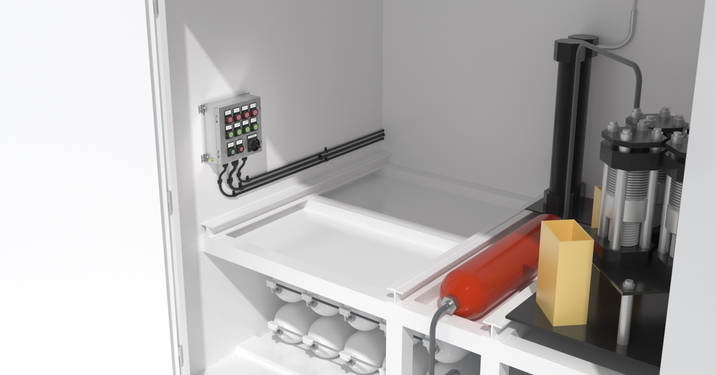Hydrogen Filling Station

Delivery and Storage
Compared to a conventional filling station for diesel and gasoline, not much changes for the tanker at a hydrogen filling station: you drive up to the pump, connect the nozzle to the vehicle and start the refueling process. But in the background, some processes run differently at a hydrogen filling station. This begins with the delivery of the alternative energy carrier. Traditionally, it is also transported to the filling station by truck, but stored in a low-pressure storage tank. Due to the explosive atmosphere during delivery, the robust Tab-Ex® 02 DZ1 from Pepperl+Fuchs brand ecom is suitable for safe monitoring of the process. A terminal box made of glass fiber-reinforced polyester in the "increased safety" type of protection (Ex e) ensures a safe signal supply at the low-pressure storage tank.

High Pressure Compressor
The biggest technical challenge at a hydrogen filling station is the dispensing process. In the low-pressure storage tank, the hydrogen has a pressure of 20 to 200 bar. For dispensing, however, it must be increased many times over, depending on the vehicle. This happens in the high-pressure compressor. A number of components from Pepperl+Fuchs are suitable for monitoring the compression process. The Comtrol IO-Link master ICE2 and an unmanaged Ethernet switch, for example, provide the necessary infrastructure for this. In the event of a collision between a vehicle and the high-pressure compressor, vibration sensors measure any vibrations that may be present, while inductive NAMUR sensors perform the end position control. For compressor control, an SR Series control box is the ideal solution.

Gas Pump
Once the hydrogen has been compressed to the required pressure, it can be dispensed at the dispenser. To provide the tanker with a convenient display and control of the refueling process, an HMI panel from Pepperl+Fuchs’ VisuNet FLX Series is the ideal solution. The monitor is suitable for protected outdoor use and due to the optically bonded display, the screen content is easy to see even in very bright lighting conditions.

To ensure that refueling takes place safely and that no hydrogen leaks out, magnetic field sensors monitor whether the nozzle is seated firmly and tightly on the vehicle tank. The F99 inclination sensor also detects possible vibrations, such as those caused by an unforeseen impact, and can trigger a shutdown of the refueling process in an emergency.








 +61 3 9358 3400
+61 3 9358 3400